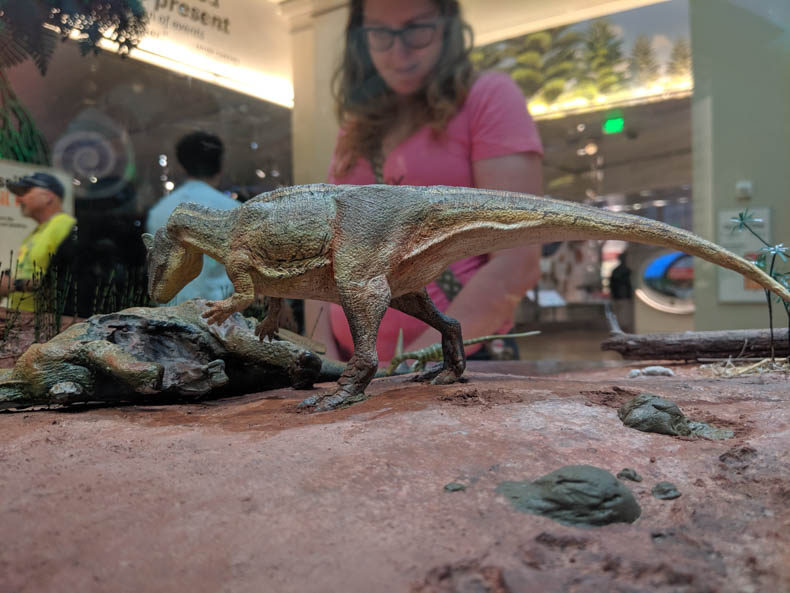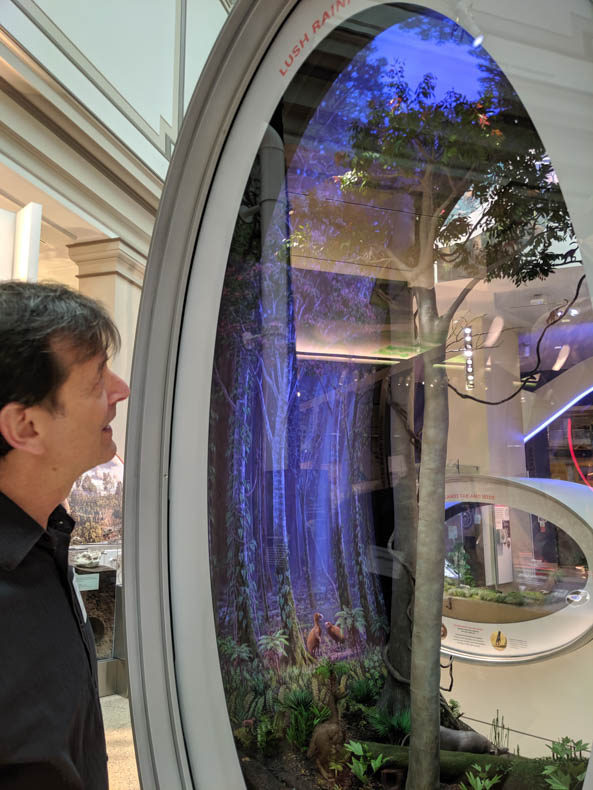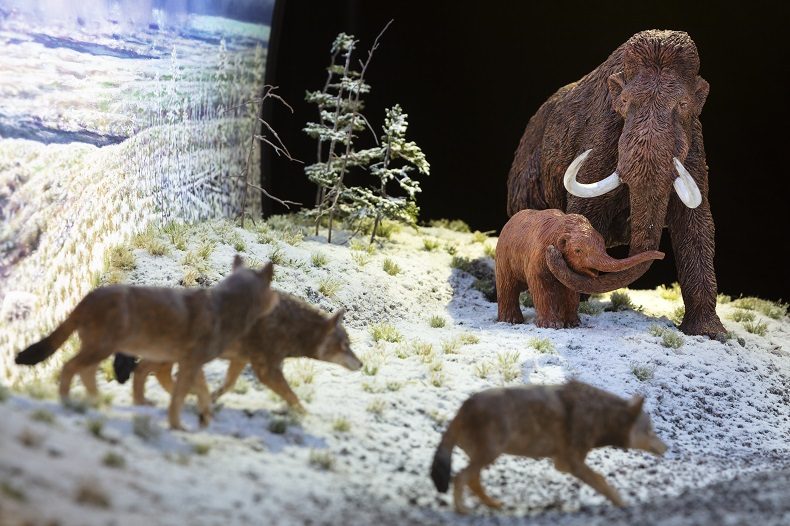
When the old mammal hall closed at the Smithsonian’s National Museum of Natural History, it was the end of an era at the museum. The museum’s mammal dioramas were of the old school, displaying the stuffed mammals in their environments. They were in a dark, low-ceilinged part of the museum, and I almost always walked past them at full speed on the way to either the ocean hall or the bathroom. When the new mammal hall opened in 2003, it was sleek, high-ceilinged and airy, and the taxidermied mammals reclined and leapt against white backgrounds to tell a story about evolution.
Evolution is a darn good story, and the mammals look great. And I certainly wouldn’t know of the existence of the pink fairy armadillo if the exhibit hadn’t been redone.
But I have a deep fondness for dioramas. And I’m here to bring you good news: The museum has a whole new batch of dioramas. They are tiny and adorable and I wanted to live inside them. Or I would have, if there hadn’t been so many terrifying predators around.
The new dioramas are in the museum’s fossil hall, which reopened a week and a half ago after a five-year renovation as dramatic as the mammals’. The fossil hall tells the entire history of life, from when the first microbes found their way onto land and started turning rocks into soil, past the dinosaurs and the giant deer, to today and the future.
“We know there’s a great fondness for dioramas,” exhibition project manager Siobhan Starrs told me, during the press preview for the new hall. With this fondness in mind, she and colleagues tossed around ideas and hit on the shoebox dioramas of childhood. They thought, “Why don’t we do something where we make it small, but beautiful?”
To one side of us stood a rainforest from Wyoming. Yes, Wyoming–56 to 53 to million years ago, the atmosphere had up to five times as much carbon dioxide as it does now and the world was much warmer, by an average of 14 to 25 degrees Fahrenheit.

The jewel-like dioramas are built inside oval display cases, like hatboxes turned on edge, with glass on both sides. In the rainforest, tiny mammals climb along vines, high in the canopy. The dinosaurs are gone, but the birds, their descendants, are there. Every animal and plant is a particular species, known from fossils. Some of those fossils are displayed nearby.
Although the dioramas are tiny, they feel immersive. A gorgeous, custom-made background arcs around each inside edge to show you the sides of the scene and the sky. It’s always dim in a rainforest, but if you watch the patch of sky at the top, you can see the day go by as the scene turns to night, then light again. At separate times, both Starrs and Scott Wing, a curator of fossil plants, took me to the other side of the diorama to show me tiny bats that had just been installed: Two on the wing and three roosting high on a tree.
It’s all delightful. Go forward in time and see the appearance of grasslands, then big hairy elephant relatives in the snow. Go back in time and you’ll see a sneaky T. rex behind a downed log, watching a family of prey scamper along the water’s edge; go farther back, and you can find a predator feeding on a stegosaurus—with herbivore poop dotting the landscape, and a pterosaur flying by.

The more you look, the more you see. Leaves have insect damage. Fish and turtles frolic underwater, at preschooler eye level. In one of the more recent displays, a flock of passenger pigeons approaches. Each diorama comes with a mark at the edge showing how tall a 6-foot person would be, and it’s so easy to imagine shrinking down and wandering in the ancient vegetation. The scale of the dinosaur makes sense, seen like this, and in its context.
The main attraction is the fossils, and they are great; you should see the T. rex chomping on a Triceratops‘s frill, and the Camarasaurus rearing to reach the top of a tree. But I’ll be making sure all of my out-of-town guests get the chance to marvel at those miniature worlds.
Photos: Dining dino and rainforest, Helen Fields; Mammoths or mastodons in the snow, National Museum of Natural History.